Magic Hill (Elementary School) - Czech Republic
Region: Říčany
The other schools in the Quad Blog: Koskelan Koulu (Finland), Escola Frei Bartolomeu dos Mártires (Portugal), Mater Dei National School (Ireland), Shottermill Junior School (UK)
Creative Connections Project: Citizenship and challenging stereotypes
A profile of the school
‘Magic Hill’ is in Říčany, a small town about 20kms from Prague. This distance, together with its ‘fresh air’, made the place attractive about a century ago. The school was founded and its teaching style introduced with contribution of a university teacher. It is accompanied by an English pre-school; some pupils are already fluent in English when they begin school. About half of the subjects are taught by native speakers in English and each year, for two weeks, the children go to Chicago. There are only the first five classes in the school and there is up to fifteen pupils in each class. The students usually continue their school attendance at highly prestigious high schools. The school competes for its students with several other schools in the neighbourhood which also offer exclusive learning environments. The significance of the teaching in the school is the individual approach to each student. Teachers give parents their reflections on their child´s learning on a weekly basis; these reflections involve views from the teacher, the student and the parents, and a discussion of these between them all. The students do not experience grading as central to their education or as something stressful.
The role of Visual Arts Education in the curriculum is rather marginal, which is the case of all arts education including both physical and musical arts. A great deal of educational energy is devoted to language acquisition. Visual, physical and musical learning is evaluated together at the end of the year; with verbal statements about the student´s active participation. The teacher has relative freedom in scheduling art lessons. If there are teachers devoted to teaching Art, there is above-standard space for their work, involving also material backgrounds (e.g. a workshop, instruments and materials) and the possibility of afterschool clubs.
The focus on European lingua franca was one of the reasons for including the school in the project. Another reason was that the experience of some the cosmopolitan teachers in this school would enable us to obtain unique views on European citizenship.
Background
The children participating in the project were nine and ten years old. The teacher and researcher concluded that asking such young children directly about their European identity would offer us no understanding, so we it was decided to research what the children’s thought was important about belonging to a community of people. We started the detailed planning at a point when the teacher focused on the subject-specific matter of light and shadow (studied as a still life), and we decided to keep the subject context while employing the project theme and use the Portuguese artist Michael de Brito (from the Creative Connections Connected Gallery). The teacher also wanted to challenge some of the usual stereotypes of ‘different’ people, and to offer the children different ways of making judgements. We agreed to use the metaphorical power of art (e.g. light and shadow: positive and negative, good and bad; polysemy and metamorphoses of a shape/body: strengths and limits of an interpretation). We planned situations in which the children could use aesthetic practices to reflect on their judgements, without their earlier standpoints being explicitly contradicted by the teacher´s authority. For children, this promised development of their critical skills, and in relation to language use and development of expressive and heuristic language functions.1 The latter even made it possible for the pupils to reach a meta-cognitive level in understanding their own judgements.
Project Outline
1st and 2nd lessons
a) The third-graders continued studying objects in relation to light and shadow. They were asked to photograph the object in light which reached the ground in a narrow angle. Their task was to use the angle of the light to distort the object´s shape in the shadow. They explored the possible metamorphosis of a single shape. They experienced it as not permanent. This introduced the visual metaphor of diversity of the given.
b) The pupils looked at a painting from the Netherlands with the motive of still life, and the teacher told them about the importance of light in creating the illusion of physical presence, (using the tactile aspect of the visual). For homework the children were asked to observe and photo-document two different light settings of their family dinner. These activities served as preparation for encountering reproductions of De Brito´s images of family meals. First, the pupils were asked to document their family dinner with candles and then another evening with electric light. The aim was to sharpen observation skills. The specific learning for the project was to understand how light engages in a community gathering such as a meal.
3rd lesson
The children brought the images into the classroom, and discussed the differences. The aim was to build understanding of the social significance of light. The classroom dialogue was focused on narratives relating to what it meant for the pupils to be home with their parents, around the table. The children observed that candle light is more festive, while an electric light on the ceiling is quite mundane, and that the effect relates also to the light´s position. The children agreed that the candle emphasised the people sitting around it at the table, as the rest of the room was hidden in the dark.
4th and 5th lessons
The aim of this lesson was to improve the children’s communicative skills on the creative field: Moving beyond students´ creative privacy into creative community, sharing the space.
The children copied their shadows (from the photos made in a low light at the very beginning of the project) onto coloured foam (2mm thick). They cut and carved the foam (with help) and then sat in a circle around a large piece of white paper. The teacher asked the pupils to find a place for their piece on the paper, one after another. When the image has been settled, they discussed the possible meanings and analysed the role of individual shapes in the image and also discussed the process of its composing. The children worked individually with the foam shape and delineated it and its cast shadow on a white and black paper, then cut it and pasted it on a grey paper, using first white for the body and black for the shadow, and then reversing it. The aim was to train children´s graphical imagination through working with light contrast and to present the artistic principle of estrangement (light is dark and dark is light). Creative Connections specific: introducing the metaphor of positive and negative, and experiencing their twist.
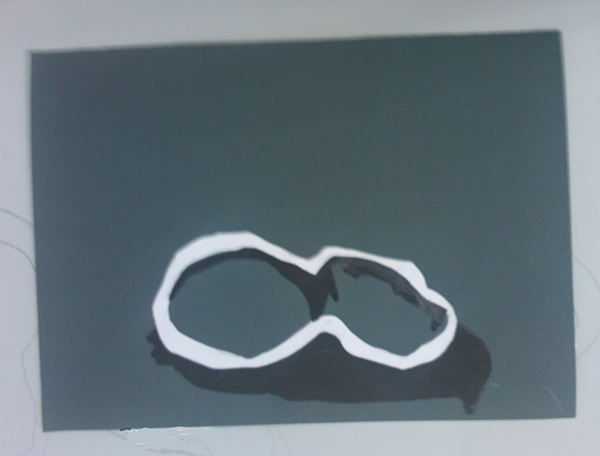
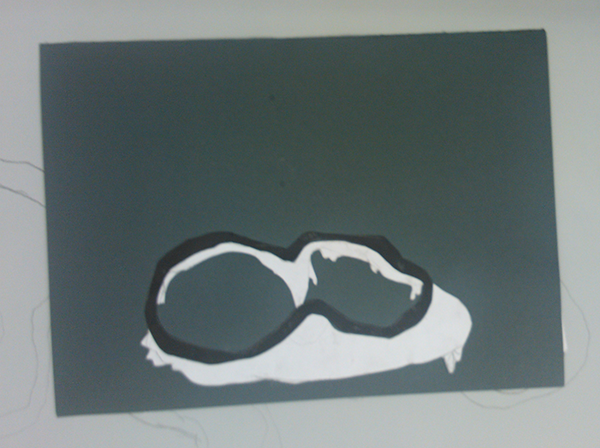
6th lesson
The pupils used the foam´s shape as a template, delineated its deformations and repetitions, so that they could interpret the resultant drawings as related beings. They had written short narratives. The aim was to train interpretation of an object in the media of drawing. The students have already experienced changes of the shape and changes of its connotations before (when casting different shadows of the same object). Creative Connections specific: to see what the children would mention as important in constituting the community of related beings.
7th lesson
The pupils received a blank paper with the proportions of de Brito´s ‘Reunion’, in which there were only three ‘windows’ into the picture. They did not know de Brito´s image and their task was to complete the fragmented image. The children saw that it was possible to interpret the given ‘insights’ in a meaningful way, and even in a relevant way in relation to the image, while missing the nominal subject of the image. The aim of the lesson was to train children’s fluency of creative interpretation, and to obtain some meta-cognitive understanding about interpretation. Creative Connections specific: problematizing and evaluating judgement that we make about things seen through only semi-or less-transparent medium.
8th lesson
a) The pupils received two sheets, with black and white reproductions of de Brito´s and van Gogh´s (Potato Eaters) artworks. They were asked to list six key words and six key colours of the image. Then the teacher showed them the image in colour, and opened a discussion about the reasons for word and colour choices. Some children commented on van Gogh´s Potato Eaters being a poor and sad dinner in contrast to de Brito´s. The teacher then channelled discussion to the differences in material culture of the past and the present. The aim was to build understanding that contemporary design and things around us are not ‘a matter of course’. This was done through drawing attention to specific features of modern experience contrasted to a historical image. CC specific: opening discussion about how designs impact on the way we live and act in community.
b) The children were asked to point out similarities between the two artworks: De Brito´s and van Gogh´s, which aimed at sharpening observation skills and opening the understanding of art´s intertextuality.
9th lesson
A Skype meeting was carried out with a Creative Connections Portuguese primary school in Viana do Castelo and the children shared their experiences. Creative Connections specific aim: connecting the students with the Portuguese students.
10th, 11th lessons
The teacher read two versions of the Goldilocks fairy story to the pupils, which is about a girl who goes to the bears´ house and eats their family meal. Then the teacher asked the children to portray the girl. The aim was to reduce stereotyping and point out different levels that make one person. Creative Connections specific: exploring thinking about strangers (possibly migrates) who are in need.
Contemporary art
We used de Brito´s image ‘Reunion’ for its relation to the chosen theme of belonging, sharing space, and creating a community. De Brito presents a family circle, a primary place, where the children obtain the experience of belonging to a group of people. Using the de Brito image encouraged discussions concerning family gatherings and the role of contemporary design and material culture in the community. Interpreting art increased the children´s interest in meeting art in person, which resulted in their visiting the Gallery Rudolfinum, a collaborating gallery of Art Education Dept., which was exhibiting a new figurative exhibition. The children spent double the expected time at the gallery because of their sudden interest in the exhibition. They became involved with worksheets the teacher and researcher had prepared for them, which helped them delay the judgement on their emotional perceptions of images.
Reflecting on the project
It was felt that the whole scheme had the potential for being simplified or elaborated over a longer period.
6th lesson
Printing the pattern instead of drawing would have fitted in the scheme better, as it would continue the graphical thinking about positive and negative planes. However, linearity is a different issue.
9th lesson
During the project, the children had problems blogging; they were not used to it. The teacher commented on the surprisingly high demands of the blogging and in her opinion relative futility of doing this if the students do not meet in person. When the students got to blogging, one of them wrote a comment to an image, and it was perceived as offensive by the image´s author. The teacher found it a matter of some seriousness, but also she explained, that the children could not imagine who sits on the other side of the communication, as they have no face to face experience with them. So they do not actually have the feeling of hurting somebody. The researcher thought a language misunderstanding could have been in the picture as well, and the teacher was advised by the Creative Connections team to use Google translate in their communications. This demand met with rejection from the teacher, which accounts to the school´s focus on second language full immersion, a pride which the school associates with its reputation. At the beginning, the teacher advocated the children should meet another project school with a Roma minority, but this school failed to continue with the project.
10th, 11th lessons
The children could have worked with shadow (e.g. cast with their own body), as it was already employed in previous lessons and connoted with negativity which the pupils strived to express. Also, introducing installation photography could help to increase the children´s sense of identification with individual characters.
Success indicators
3rd lesson
The children discussed how often their family meets as a whole. Some children were jealous of others who experienced more frequent gatherings, some expressed they were not comfortable about it. This was a new experience for the teacher, because until then the pupils were unwilling to give any account of their fears; in the school class, it was considered cool to always ’be fine’. It was surprising for the teacher, that from this moment on, that habit has changed, and the children started to codify ways of expressing dissatisfaction.
4th lesson
It was probably using non-definitive medium, where nobody could ‘spoil it’, that helped to involve the pupils in constructive collaboration on their common art.
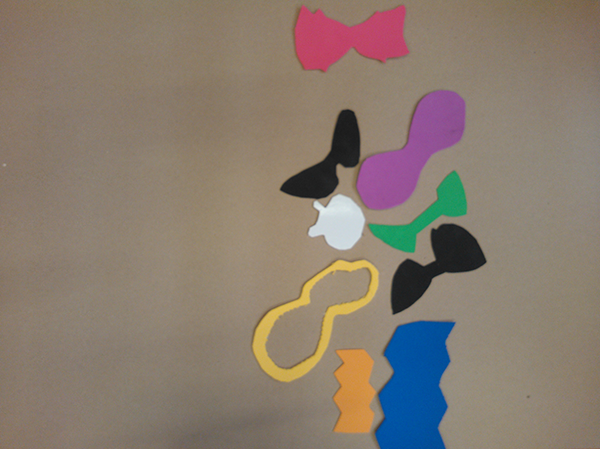
7th lesson
The pupils captured some features of the images, which convinced them that the image is a meaningful whole, where each piece includes a moment of another piece, e.g. in the image of a family around the table, people sitting opposite each other avoiding eye contact, was sensitively interpreted as a broken bridge in a landscape.
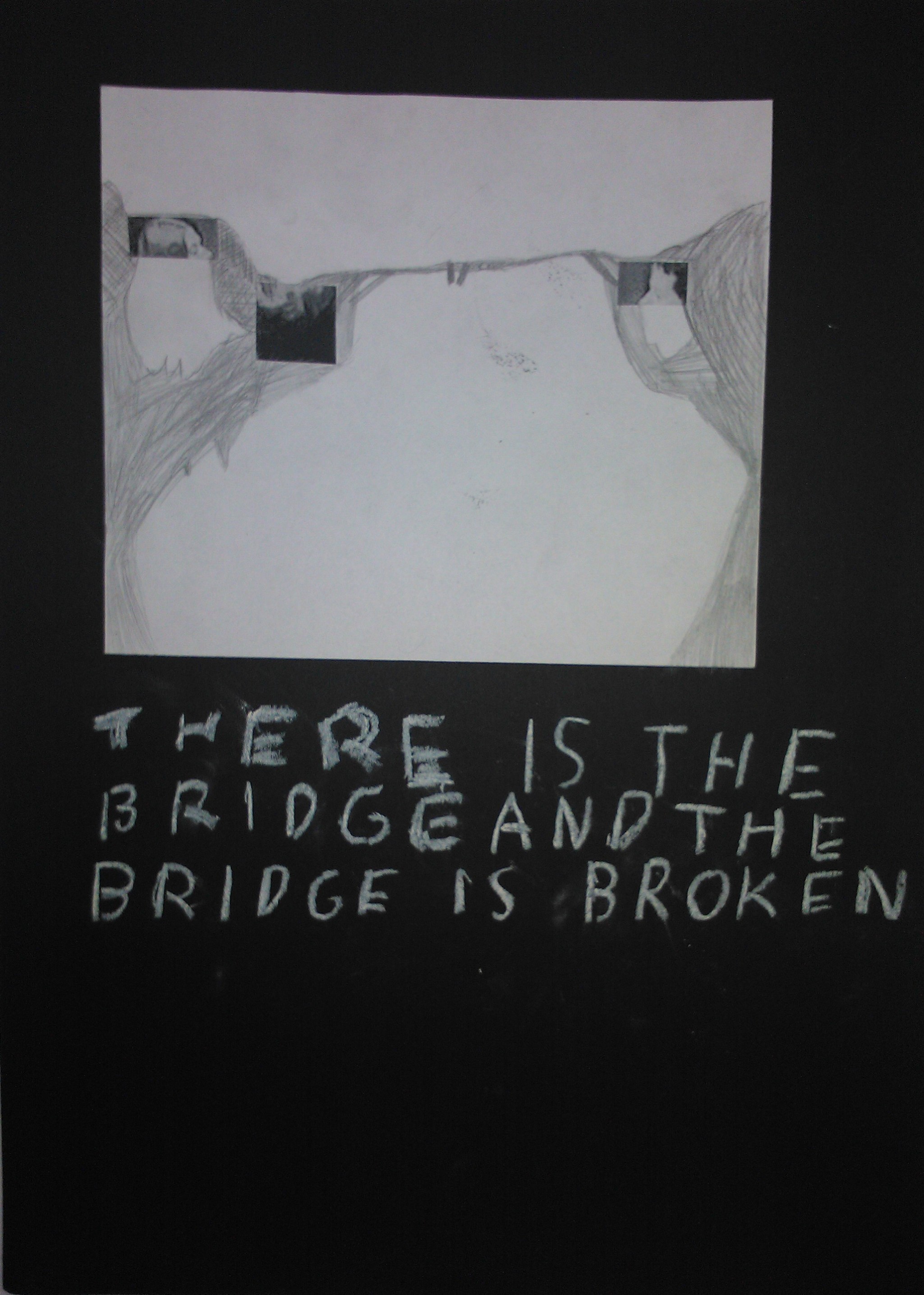
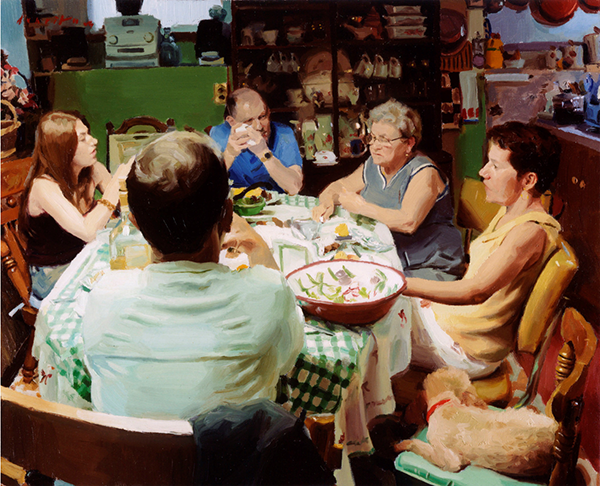
The students made meta-language observations on the way they created assumptions about the image and they saw that some stereotype expectations lead to very nonspecific interpretations, which offered no fascinating assumption about the meaning.
8th lesson
Both the practical activity and verbal analysis opened a discussion about the modern household, its colours and lighting, in comparison with images of dwelling in historical times. This enabled the children to reflect on the specifics of a contemporary household, its lighting and other equipment and it was an opportunity to identify specific aspects of contemporary design, including its relationship to nationality.
Lessons Learned and Findings
4th lesson
Helping establish a collaborating creative community of children requires elevating the creative tension using media leading to non-definitive and changeable pieces of work. Well planned creative practice can positively influence the sense of community.
6th lesson
Also, the students mentioned the considerable age of the community, which they often expressed by figures composed of the number ‘9’. It is tempting to associate it with price information of many products, suggesting that it is a favourable figure and a real bargain. “The father is 9999 years old.” Anyway, similar numbers were often used by the children to accompany a sense of value.
The children mentioned some kind of guarding in their comments to family projections: “... a family of potatoes...they are big, (so that) people can´t eat them”, “...a family of ponds ... we go pour water in them”.
Hypothetically, feeling included in community is followed by thoughts about vulnerability. The children repeatedly placed the family scene at the sea side, alluding to holidays. There was for example, a comment referring to the Christmas holidays: “The mother is a mountain and a Christmas tree, too”. The students referred to some kind of holiday in the projection of community. If we think about how the European community is constituted in terms of holidays or festivals, we will find that – unlike most establishments, Europe does not have its annual holiday that would be known and relevant to these children.
10th, 11th lessons
The teacher was surprised by several children´s reactions to Goldilocks ‘apologetic’ version of her story. These were even more extreme than the children’s reactions to the version that emphasized the bears´ perspective. The children could have been provoked by the character´s attempt to have them reconsider their judgement. Some pupils found her apologetic explanation invalid, and called her an invasive intruder, who is attacking private space. Some children argued that Goldilocks was only naive, and she needed help. An attempt to challenge students´ proclaimed viewpoints even in an indirect way (through the story) was immediately followed by them voicing their opinion again.
Reference:
- RYMARCZYK, J. (2013). Vytvoření obrazu a řeč o něm. Výtvarná výchova, 53 (4), 4-9.


